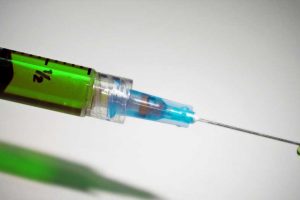Report: Misinformation, vaccine concerns contribute to low COVID-19 vaccination rate among children


A new report from Indiana University sociologist Jessica Calarco and Ph.D. candidate Elizabeth Anderson sheds light on why the rate of COVID-19 vaccination among U.S. children is far lower than the rate of vaccination among adults.
“Parents’ Perspectives on Children and COVID-19,” published in IUScholarWorks, analyzes data from the 2022 Parenting in Tumultuous Times Survey, which was conducted during the height of the omicron wave. The survey asked more than 2,000 U.S. parents of children under 18 about the health decisions they made during the pandemic.
“What our data show is that most parents in the U.S., even during these times of peak transmission, were not very concerned about the possibility of their household or their kids getting COVID,” said Calarco, associate professor of sociology in the IU Bloomington College of Arts and Sciences. “Only about 40% of all the parents in the survey said they were either very or extremely concerned about the risk of COVID.”
The report shows that three factors played a key role in parents’ decisions not to mask or vaccinate their children:
- Early reports that kids were at low risk of contracting and transmitting COVID-19, which contributed to parents thinking it wasn’t a serious threat to children and “healthy” people.
- High levels of concern about the safety and effectiveness of masks and COVID-19 vaccines for children. More than half of U.S. parents were at least somewhat concerned about how masks might impact kids’ learning/academic achievement, social and emotional skills, language development, immune systems and oxygen intake. More than two-thirds were at least somewhat concerned that kids would have difficulty wearing masks correctly.
- Some parents’ disengagement from or lack of trust in sources of news and information about COVID-19. By January 2022, 40% of U.S. parents were following the news about COVID-19 less closely than they were in March 2020, and those parents who were following the news less closely were also less likely to vaccinate or mask their kids.
Research has shown that COVID-19 vaccines are safe and effective. Yet the survey revealed that 53% of parents saw the vaccines as an equal or greater risk to their children than contracting COVID-19.
“There are high levels of fear around the potential safety of vaccines for children,” Calarco said. “That builds on fears we’ve seen with many other new vaccines, but I think it’s amplified in this case because of the high level of misinformation that has been circulated.”
Researchers also determined that low rates of vaccination among children are driven in large part by the decisions of white mothers without bachelor’s degrees. Only 31% of those mothers reported having one child who is vaccinated or will be vaccinated as soon as possible, compared to 55% of parents overall. The mothers themselves are also less likely to be vaccinated than other parents, with only 39% vaccinated compared to 64% of parents overall.
These patterns stem in part from the fact that white women without bachelor’s degrees are more likely than other mothers to identify as Republicans or political Independents and more likely than any mothers to be stay-at-home mothers—a group that has low rates of vaccination overall. Among mothers who were not working for pay, only 48% were vaccinated, compared to 73% of mothers and 77% of fathers who were working for pay full time.
“One of the really surprising findings that came out of this report was the extremely low rates of vaccination among stay-at-home moms,” Calarco said. “In general, in the U.S. population we see women being more likely than men to be vaccinated. But what we see when we look at parents of young children in the U.S., we see that the group that is least likely to be vaccinated is mothers who are not working for pay.”
Despite the vaccine hesitancy and lack of concern about COVID-19, almost half of parents with unvaccinated children said they would vaccinate them if required to do so.
Source: Read Full Article